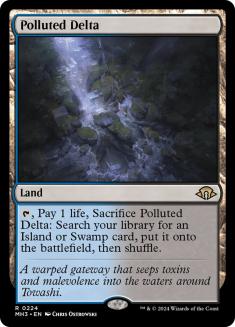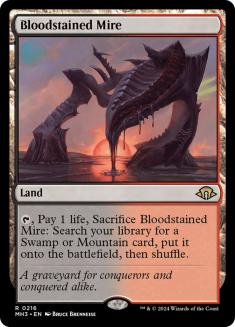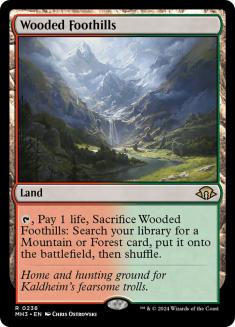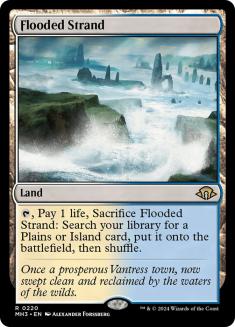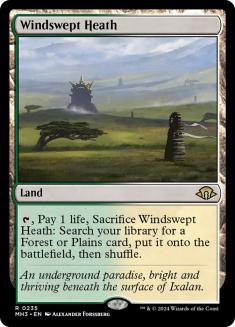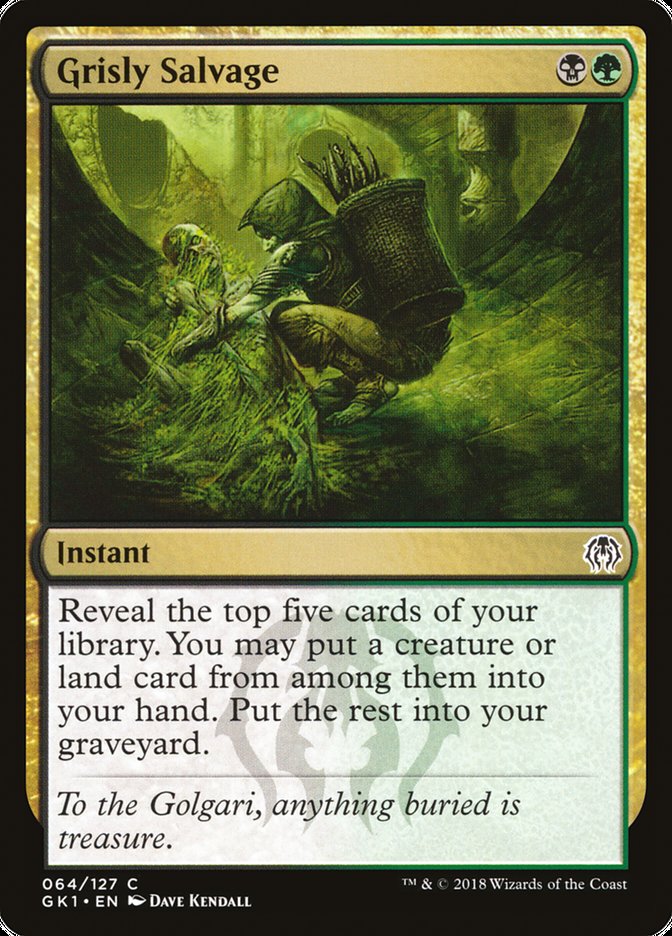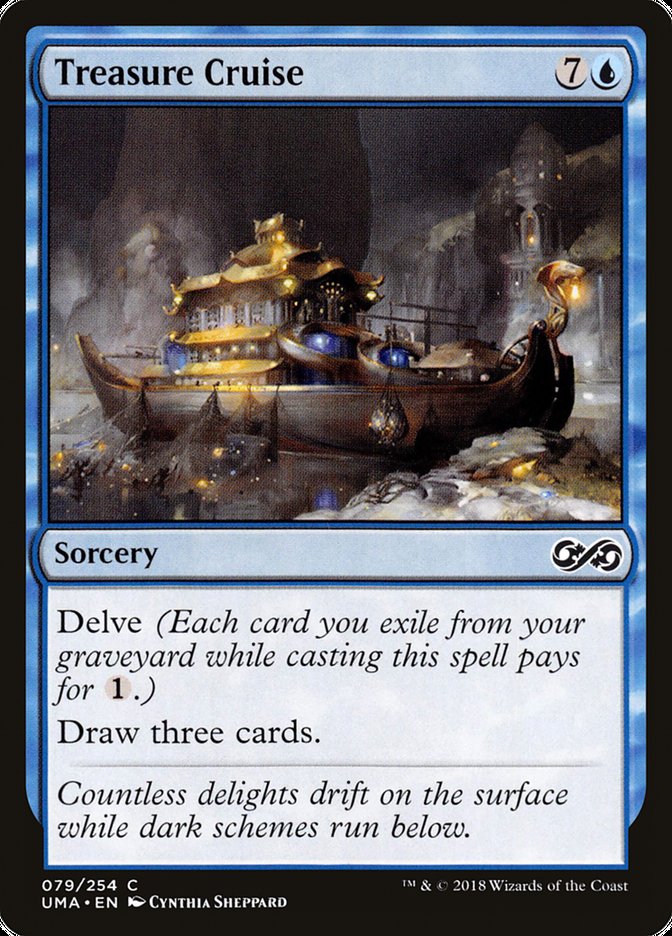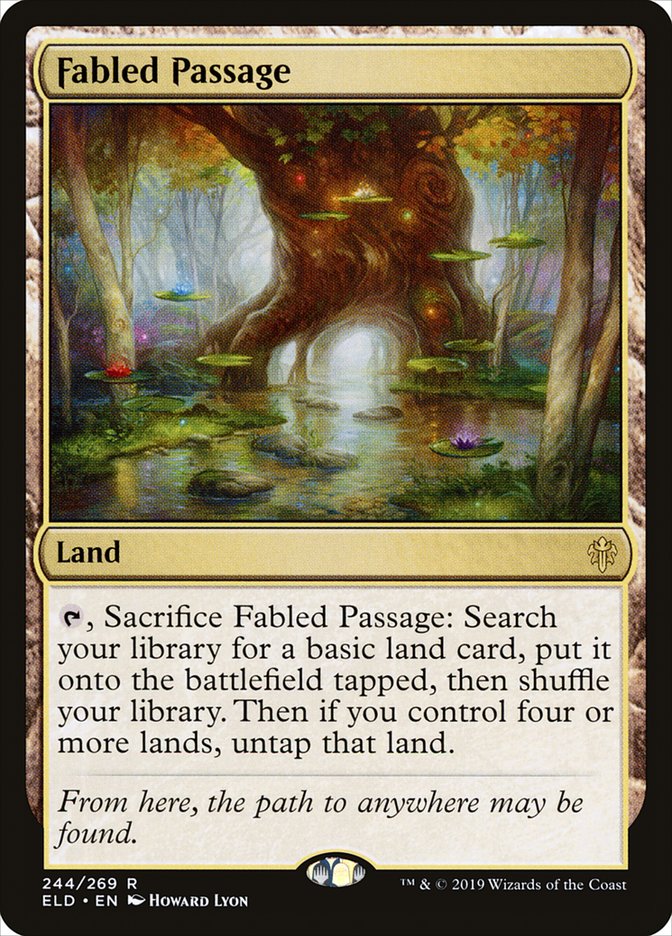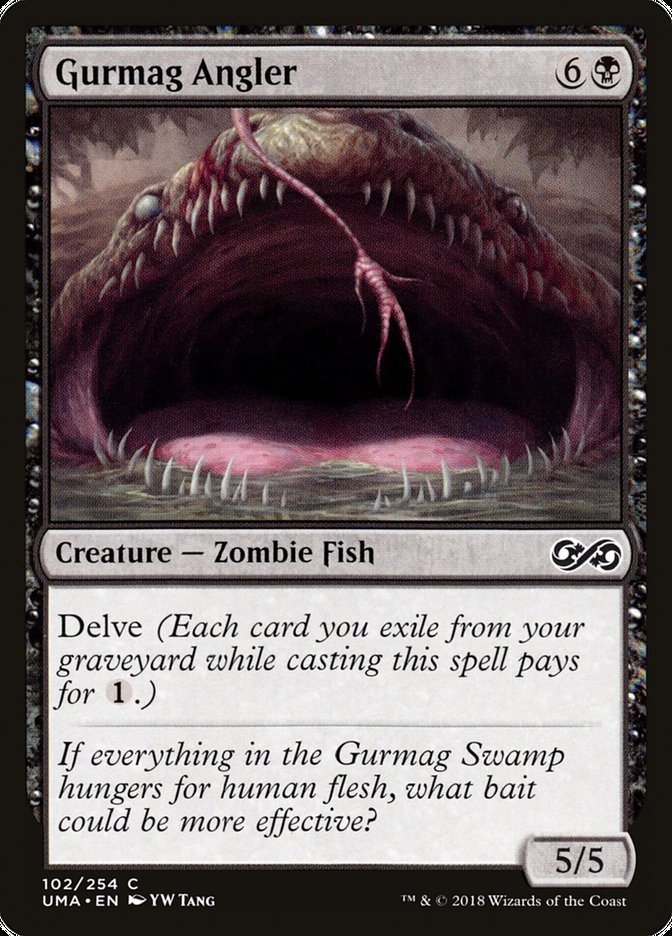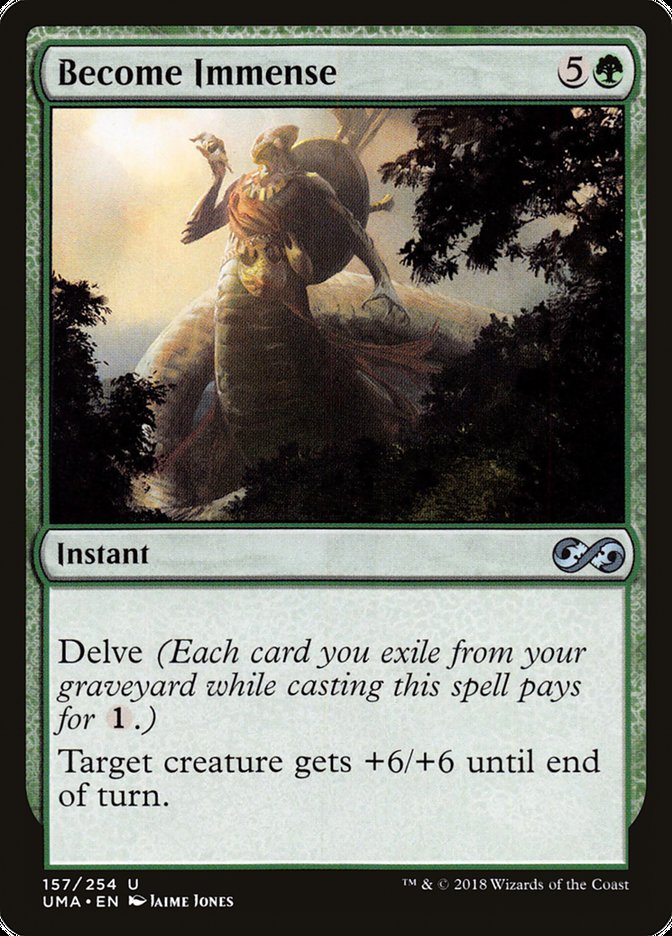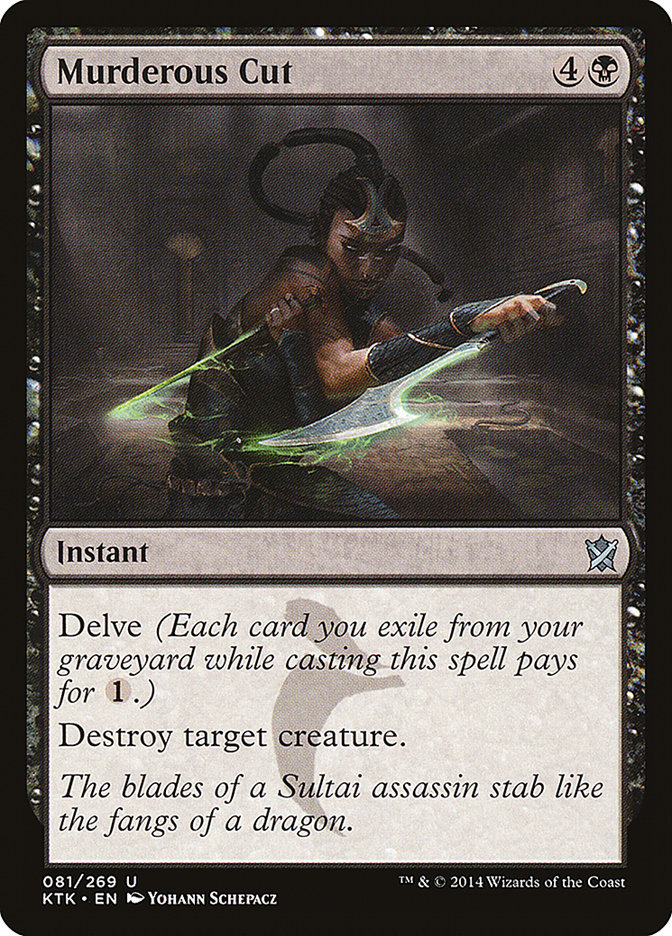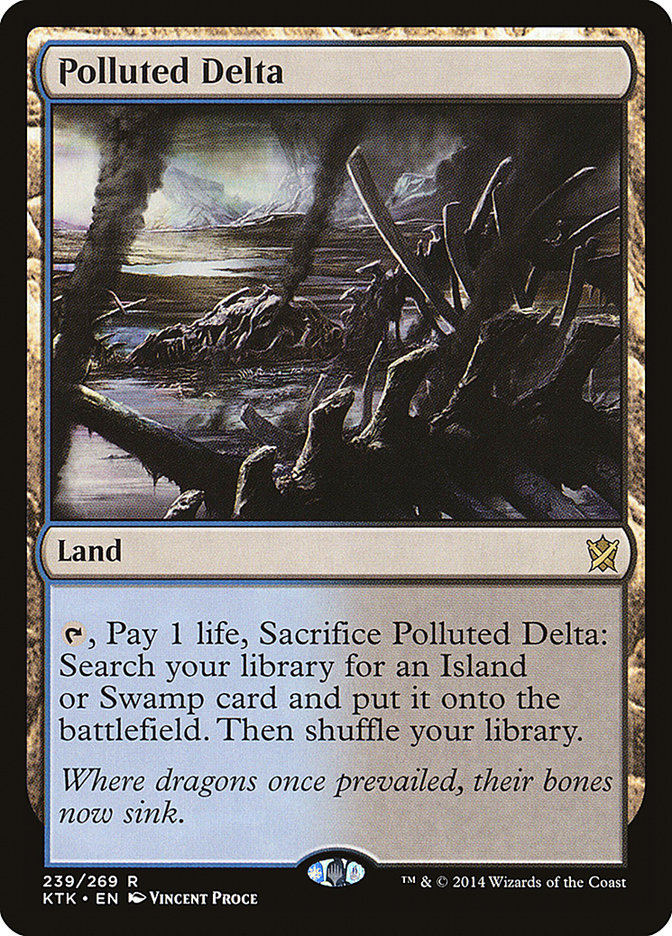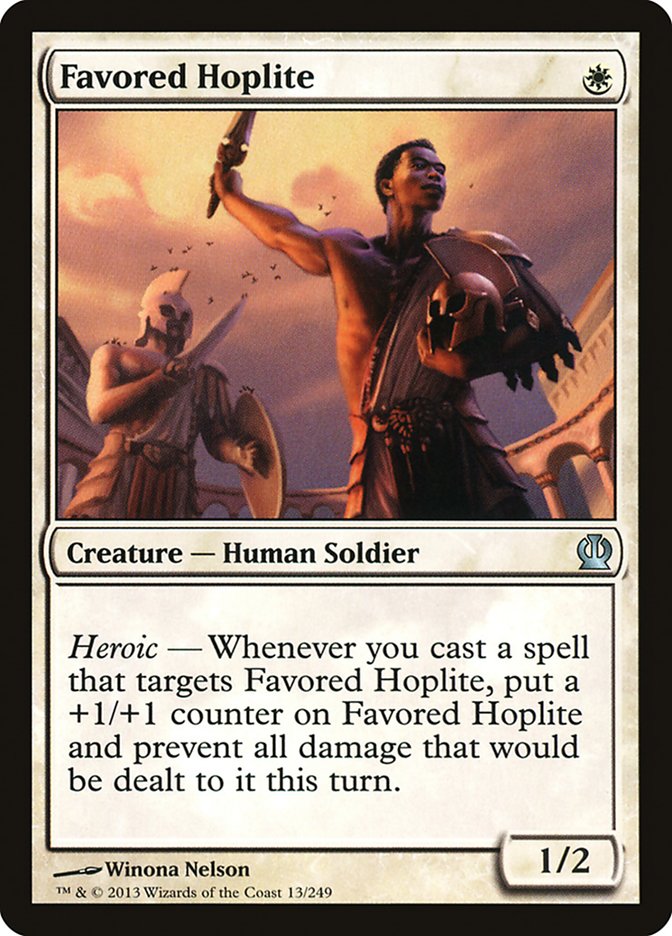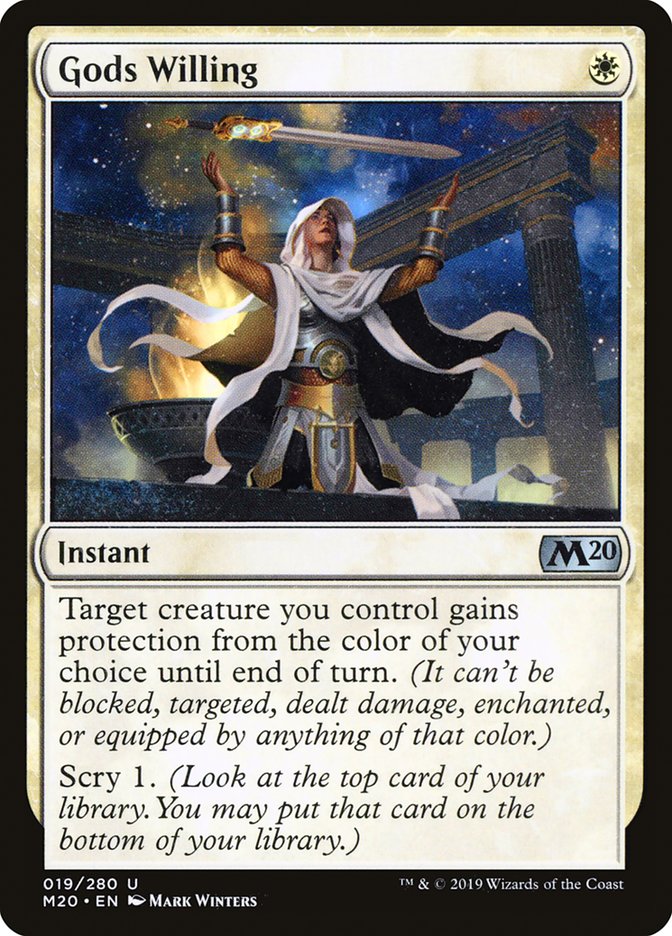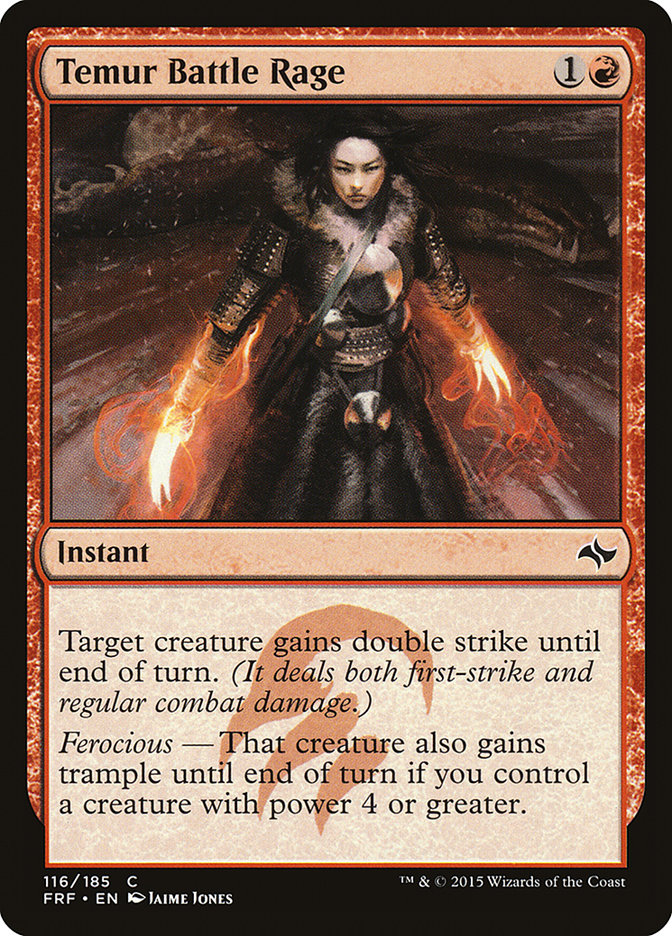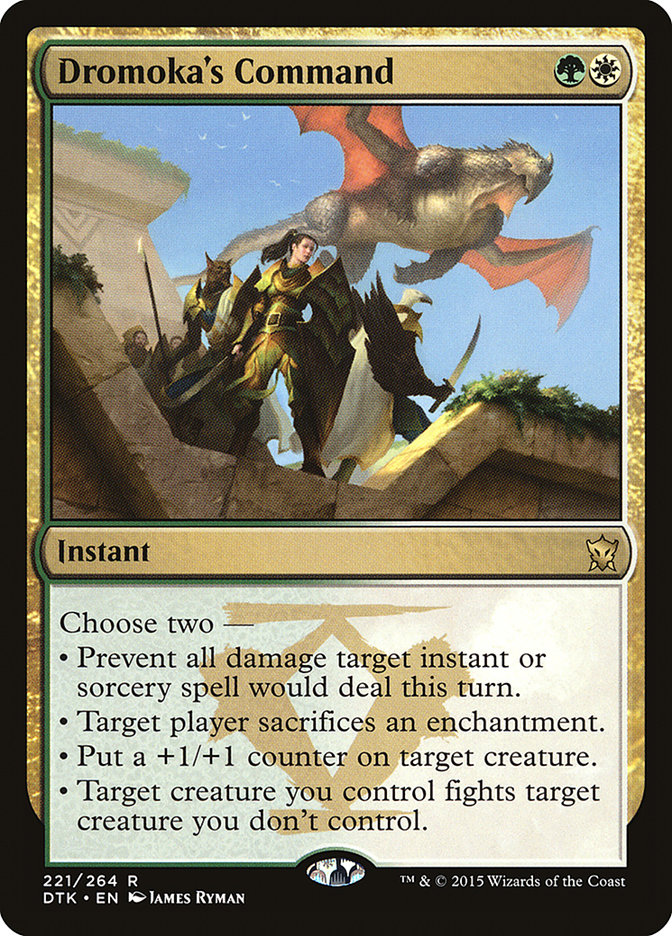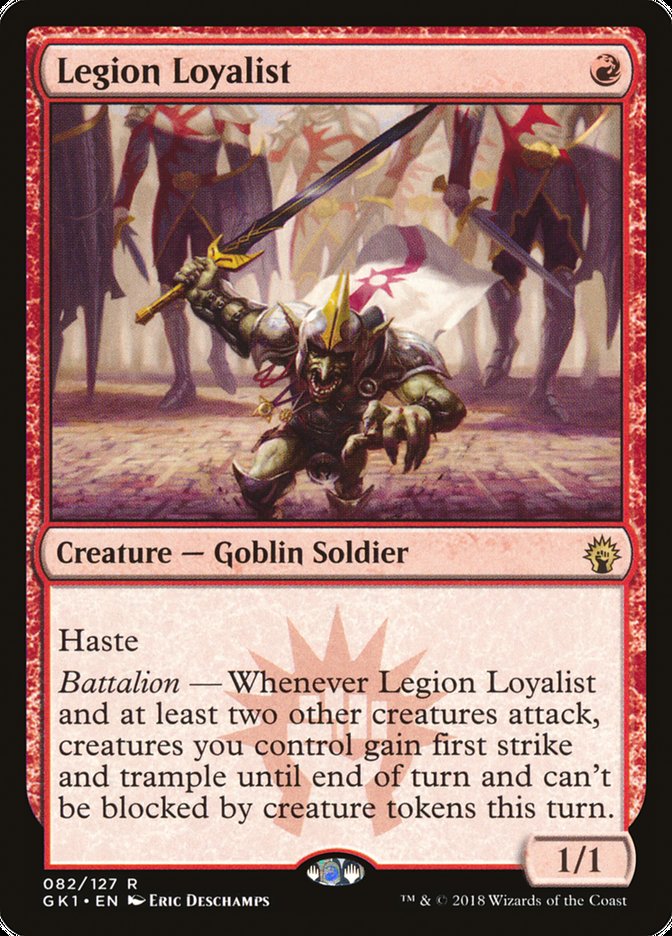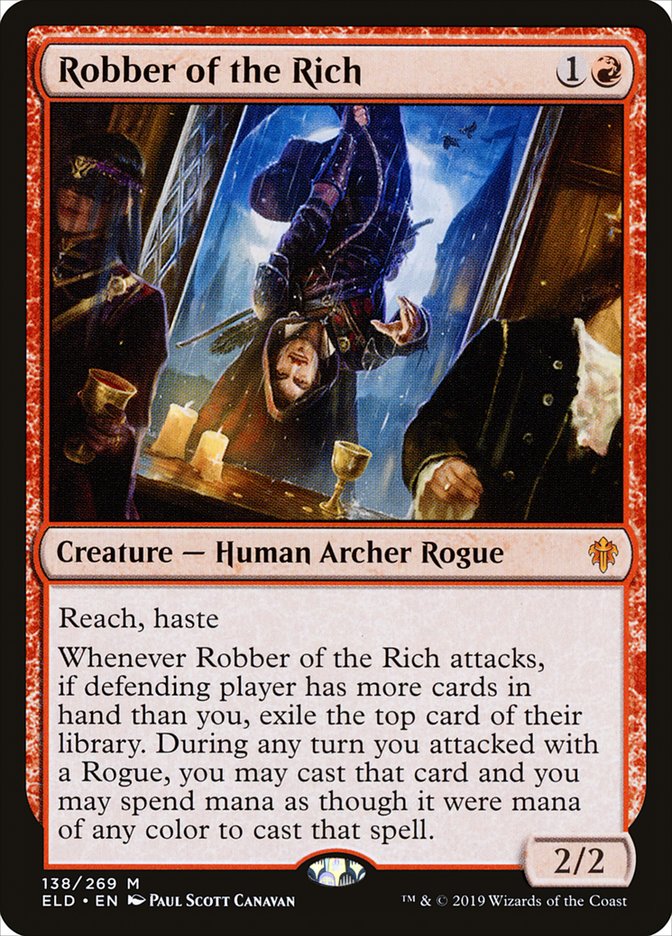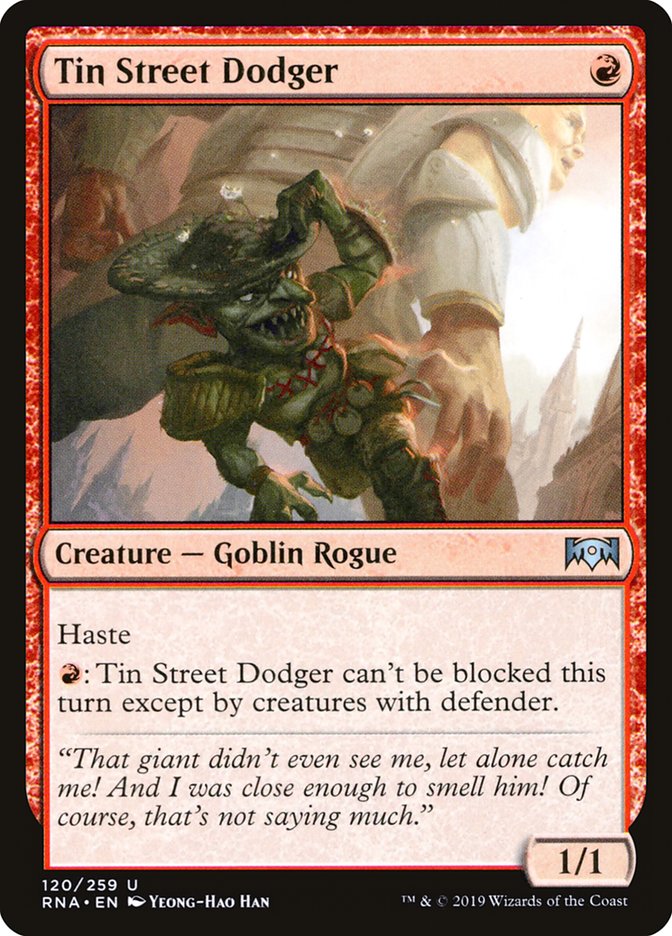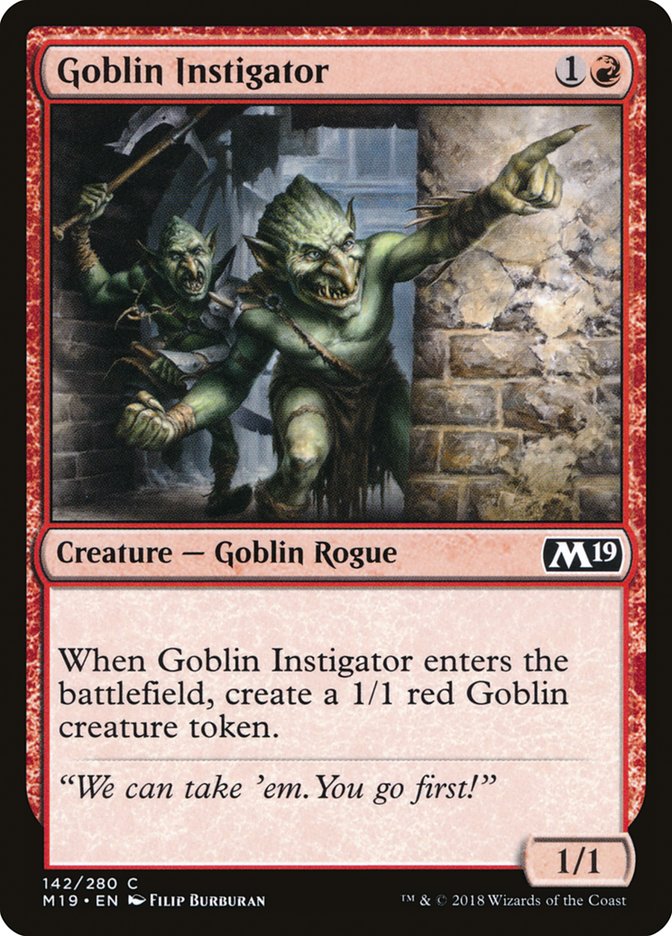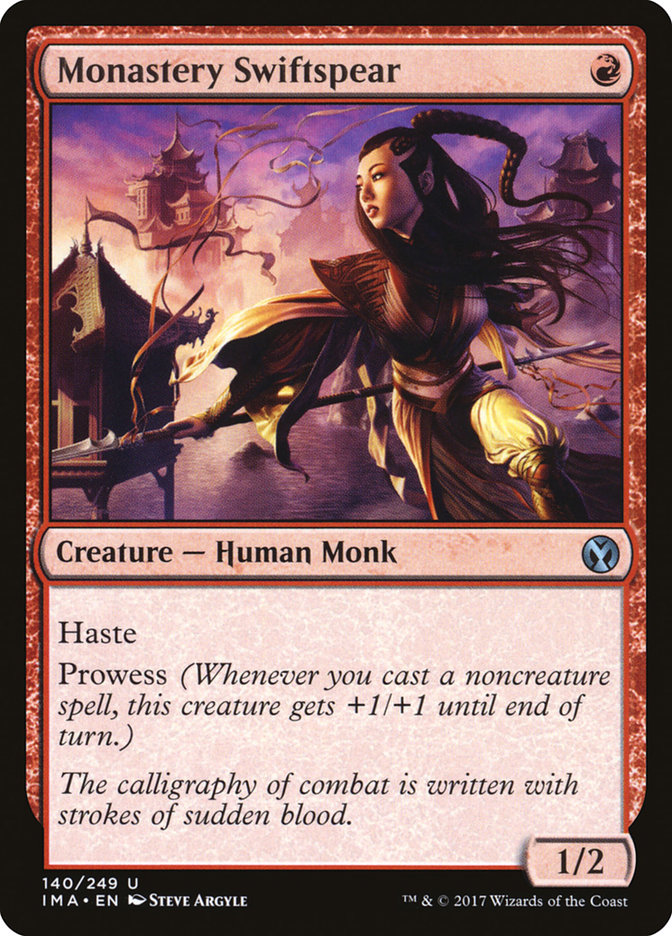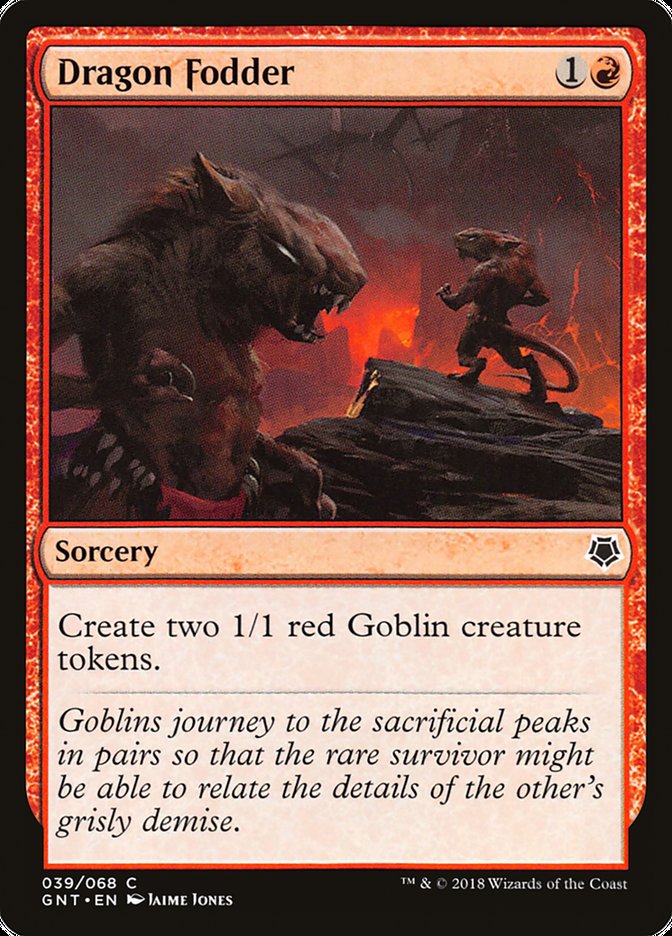Monday, October 21st, 2019: Wizards of the Coast announced Pioneer, a new non-rotating Constructed format consisting of sets from Return to Ravnica to the most recent Magic set, which is Throne of Eldraine currently.
The format begins with only five banned cards; the fetchlands from Khans of Tarkir. They may seem like strange exclusions at first, but I agree with the decision here. It’s partially about opening space for other popular cards in the format to thrive, but an unexplored format of nineteen Magic sets is highly likely to have some degenerate combinations available and many cards are currently banned in Modern or older formats.
Individual Card Impacts of No Fetchlands
Banned in Legacy and Modern. Its interaction with fetchlands caused Deathrite Shaman to be the ubiquitous mana creature of choice and sped up both formats. Legacy, in particular, also had Daze to set opponents back while not missing a beat yourself.
The consistency with which Deathrite Shaman could create mana was the problem. Deathrite Shaman is a good option when you have to work a little bit for it, but too good when it’s free. Remember, when Deathrite Shaman was played in Standard Abzan Reanimator with Grisly Salvage as an enabler, it was a fair, honest Magic card.
Deathrite Shaman has useful applications that are beneficial to keep the new Pioneer format in check. Incidental graveyard interaction is typically welcome and Deathrite Shaman will function more as maindeck counterplay than the broken mana accelerant it once was. Banning the fetchlands to give Deathrite Shaman breathing room to act as intended is great for fans of the card that have had their foil signed copies collecting dust all of these years. And of course, there’s Fabled Passage to get the ball rolling for Deathrite Shaman (it gets better the more opposing decks play Fabled Passage as well).
Dig Through Time and Treasure Cruise existed in Standard with only the Khans of Tarkir fetchlands. Both powerful draw spells showed up in decks at a reasonable clip without anything appearing to be too outrageous.
In Modern and Legacy, Dig Through Time and Treasure Cruise were paired with the Zendikar enemy fetchlands as well as Gitaxian Probe from New Phyrexia. Ten fetchlands was too many, but now we should be somewhat at the Standard level as before, but slightly stronger because of Fabled Passage.
Of the two, Dig Through Time will see more play since it can be cast for four or five mana on the opponent’s end step while leaving up other reactive spells. It’s a fair card similar to Into the Story.
Not as strong as a fetchland, but a mainstay in Standard and very likely Pioneer as well. Evolving Wilds and Terramorphic Expanse exist too, but I don’t anticipate them making an impact. Having such a “weak” fetchland allows for delve cards to operate under medium power level. The format can likely allow for another fetchland-type card in the future, like a Prismatic Vista or cheap cycling land, without blowing things up.
Gurmag Angler and Become Immense really need fetchlands to get cast quickly. Once again, they’re not unplayable; they just require more work.
Murderous Cut is a reasonable singleton removal spell that’s a one-mana Doom Blade in the later stages of the game. Still playable.
We’ll have to see what threats there are for Fatal Push and whether the near-free revolt from fetchlands will be missed. The format will be slower than Modern, so maybe some three-drops like Courser of Kruphix and Tireless Tracker will make their way. I expect a lot of decks to pack Smuggler’s Copter along with ways to crew it, so Fatal Push ought to be pretty good. Without Path to Exile or Lightning Bolt, the next-best one-mana removal spell is a red two-damage spell, be it Magma Spray, Wild Slash, or Fiery Impulse.
Design Space
Wizards of the Coast hates the fetchlands. They’re too strong and limit future design space for lands too much. I personally put Polluted Delta as the second-best land of all time, second only to Underground Sea (yes, even before Strip Mine, Mishra’s Workshop, Bazaar of Baghdad, and Library of Alexandria). Fetchlands also make putting basic land types on lands difficult to justify when they can be fetched out. Do you really want to see Mystic Sanctuary control going rampant?
Future Standard sets will add to Pioneer without worry of the effects that fetchlands will have. Yes, this means that fetchlands will likely not be reprinted in Standard for a long time, but it does mean that cards with basic land types like Gingerbread Cabin might pop up in more frequency.
Shuffling
Shuffling take a lot of time. I’ve spent more time shuffling and sideboarding than actual playtime in matches before. Not having to shuffle is one of the most appealing aspects of Magic Arena and Magic Online.
Shuffling leaves room for error too. Not everyone knows what a significantly randomized deck is. Some people like to shuffle the opponent’s deck after every fetchland (which is their right, but often unnecessary excessive).
Shuffling leaves room for user error too. Cards can get dropped or exposed. It’s another opportunity for a shady opponent to manipulate a deck. Not saying that many people do, but closing the gap on such opportunities is all upside.
Life Totals
Seriously, though… how many games of Modern and Legacy start with one or both players going to nineteen life… and then seventeen? I use more than one row on a lifepad for life totals quite often. It’s more looking at my pad and picking up my pen and less looking at the game state and thinking about plays. An entire game action is relieved from people’s play multiple times per game with the exclusion of fetchlands.
Also, starting life totals will be higher on average than in Modern. I don’t know if that’s a good or bad thing, but Magic was intended for players to have twenty life and not need to sacrifice their life total for an optimal manabase. Without fetchlands, everyone will be on a more even field. Sure, there are shocklands too and maybe a marginally higher life total will lead to marginally longer games. Still, it’s better time saved by not having to write on note pads and search your library, shuffle your deck, and then present your deck for your opponent to shuffle.
Fetchlands also have a margin for error when agreeing on life totals between players. Many players announce their fetchland and put it straight from their hand into their graveyard before noting it on their lifepad. This is an attempt to speed up a slow process and miscommunication can surface from such actions. Banning fetchlands avoids the issue altogether.
My reasoning may seem ticky-tacky on some points, but I promise they add up. Games are slower and mistakes do arise from a player losing one life and then having to search up a land. Many times on camera, I’ve seen a Blood Crypt get fetched up from a Misty Rainforest and other similar situations where the fetchland is presumed to get any shockland in the deck. Magic would be better off without them altogether.
Enough ranting. I’ve been brewing a little for Pioneer, starting with some Standard ports of decks I’ve had success with in the past few years. Let’s take a look at a couple.
My Decklist Starting Points
Creatures (17)
- 4 Favored Hoplite
- 1 Seeker of the Way
- 4 Monastery Swiftspear
- 1 Monastery Mentor
- 2 Dreadhorde Arcanist
- 4 Tenth District Legionnaire
- 1 Feather, the Redeemed
Lands (20)
Spells (23)

Bant Heroic was my favorite Standard deck going into 2015. It had a playstyle similar to Infect of “protecting the queen” with one large threat, otherwise known as “going tall.” You may recognize Tenth District Legionnaire and Feather, the Redeemed from current Standard “Heroic” decks.
This is partially a port of the Standard Boros Feather deck and a blending of Bant Heroic from 2015. The counterspells and Ordeal of Thassas are missed for sure but are replaced with more aggressive red elements. For Week 1 of Pioneer, I’ll be exploring this color combination before likely settling back into testing Bant Heroic again.
What made Bant Heroic so great over just Azorius was Dromoka’s Command. It was cheap, a removal spell, and a pump spell for two creatures. We see Gird for Battle popping up in Standard, but Dromoka’s Command was so much stronger. Whatever Heroic build I play will certainly include this card.
Creatures (26)
- 3 Rakdos Cackler
- 4 Burning-Tree Emissary
- 3 Legion Loyalist
- 4 Foundry Street Denizen
- 4 Goblin Rabblemaster
- 4 Monastery Swiftspear
- 2 Reckless Bushwhacker
- 2 Fanatical Firebrand
Lands (21)
Spells (13)

I played Rabble Red to success during the 2014 SCG Tour season, including an Invitational win. It’s not quite a Burn deck, nor a Goblin deck, nor a pure beatdown deck. It has some synergies here and there, including some go-wide elements. At its core, it makes blocking very difficult for the opponent with a few pump spells, haste creatures, and removal spells.
Legion Loyalist was the silent MVP for Rabble Red back in the day. It was good against Master of Waves back then, and pretty much any small blocking creature with the first strike- and trample-granting aspect. The pump spells of Titan’s Strength and Rubblebelt Maaka helped push through and make blocks difficult for the opponent.
Now Legion Loyalist makes Oko, Thief of Crowns looks pretty silly. They can’t make a Food, hope for you to attack their six-loyalty planeswalker, and then make a 3/3 Elk blocker next turn, since the Food is still a token than can’t block. Sure, they can Elk your Legion Loyalist, but is that even any good? I hear some clamoring about Oko in Pioneer decks as a very strong card, and I want to be ready.
Robber of the Rich along with some other Rogues could make for a different build of the deck. Robber is a nice play off Burning-Tree Emissary, which was a past issue with Ash Zealot’s restrictive double-red mana cost. You should be able to empty your hand faster than your opponent, ensuring at least a trigger of Robber of the Rich. It’s unclear how many additional Rogues you need in the deck in case the Robber dies before your next turn. It’s possible that only Mutavault is enough to smooth everything out.
Dragon Fodder is currently occupying space in the deck as a concession to a necessary spell count for the prowess of Monastery Swiftspear. The Swiftspears could become Tin Street Dodgers and Dragon Fodders into Goblin Instigator for a true Rogue tribal deck.
No Fetchlands. No Problem.
I have a ton more decks that I want to flesh out in my notebook, but I have a strong feeling that my colleagues will be covering a lot of those decklists in the near future. Twitter and the rest of the internet have exploded with people brewing ideas for Pioneer decks, far before a paper tournament will ever take place. The race is on to find the next set of cards to ban in the format, as Wizards of the Coast has openly admitted they will take action early and often on the format outside of normal Banned and Restricted announcements. The decks I like to play tend to expose a metagame instead of outright breaking it, so while the above lists are proactive and strong, I doubt the first draft of either would take down a MagicFest in January in their current states.
I’ll be having fun iterating on them and future Pioneer decks, as will the rest of the world. The format seems like a good one, and would be much, much worse off if players had to deal with fetchlands while playing their games.


